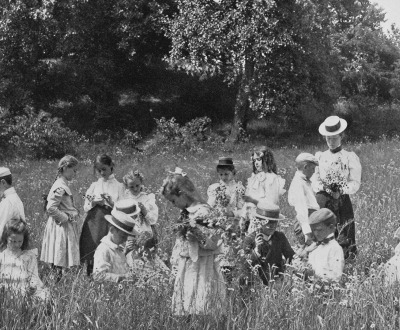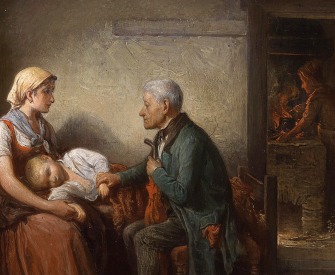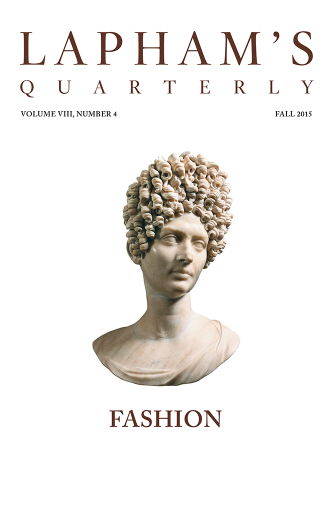That which is evil is soon learned.
—John Ray, 1670Catch and Release
A history of pedagogical practices in the classroom and in the field.
By D. Graham Burnett

A primary school in the field, 1900. Photograph by Frances Benjamin Johnston. Library of Congress, Prints and Photographs Division, Washington, D.C.
John Steinbeck—bitten, improbably enough, by a youthful bug for marine biology—found himself in the spring of 1940 on a chartered sardine boat with the invertebrate taxonomist Ed Ricketts, en route to the waters of Baja California, Mexico, to noodle in the tide pools for unknown life forms. But they were after much bigger game than the specimens they planned to stuff in little jars. At the start of The Log from the Sea of Cortez, Steinbeck’s book about their “expedition” (or was it a jaunt?), the king of Cannery Row insisted that he and his new pal Ricketts were after nothing less than a whole new way of learning about the world. Here’s the pitch:
We said, “Let’s go wide open. Let’s see what we see, record what we find, and not fool ourselves with conventional scientific strictures.” We could not observe a completely objective Sea of Cortez anyway, for in that lonely and uninhabited Gulf our boat and ourselves would change it the moment we entered.
Call it the Heisenberg uncertainty principle of the field trip. Mounting a full-bore attack on bookish objectivity and the closeted university types who went in for it, Steinbeck suddenly turned and gave ichthyologists (of all people) a few good kicks, in a passage that has become legendary among fish biologists and the students who dislike them. The subject is the seemingly innocuous taxonomic technique for identifying fish by means of the count of their fin spines—an undertaking Steinbeck casts as the epitome of the desiccated learning of the schools:
[T]he Mexican sierra has “XVII-15-IX” spines in the dorsal fin. These can easily be counted. But if the sierra strikes hard on the line so that our hands are burned, if the fish sounds and nearly escapes and finally comes in over the rail, his colors pulsing and his tail beating the air, a whole new relational externality has come into being—an entity which is more than the sum of the fish plus the fisherman. The only way to count the spines of the sierra unaffected by this second relational reality is to sit in a laboratory, open an evil-smelling jar, remove a stiff colorless fish from formalin solution, count the spines, and write the truth: “D. XVII-15-IX.” There you have recorded a reality which cannot be assailed—probably the least important reality concerning either the fish or yourself.
He and Ricketts, Steinbeck hastily assures the reader, were going to catch some sierra—and they were going to eat them too, calloused hands still bleeding from the naked line. Now that’s real knowledge, and the manly men that make and share it: no roof, no chair, no books.
It’s a somewhat goofy passage, to be sure, but I had trouble getting it out of my head one hot afternoon in the late summer of 2004, when, standing on a sandy spit in the Sea of Cortez, I landed my first Mexican sierra—a toothy, fifteen-inch torpedo of mercurial muscle speckled with yellow coins. After all, I was myself on what could (only charitably) be called an expedition—as an instructor in a two-week intensive university course on marine ecology. Together with a dozen Stanford undergraduates and a few fellow teachers, I had spent the morning diving one of the very reefs where Ricketts and Steinbeck once plucked tubeworms, mused about metaphysics, and drank warm beer (they did a lot of this). And I would return after my fishing excursion to our field station—a weathered building of termite-nibbled beams and hewn tuff, erected nearly a century ago as the headquarters of a mining company, but long since abandoned to itinerant biologists—for a lecture about fish genetics in a room lined with formalin jars, each haunted by a lurid piscine sprite.
Despite a certain boozy bravado and slightly woozy postpositivism, Steinbeck had sunk his hooks into some fundamental problems, problems that suddenly stood out sharply against the pink desert hills and cold blue water: What is knowledge, and how do we get it? Why do we go into classrooms, and when must we leave them behind?
Gingerly easing the lure from the lower jaw, I knelt in the shallows to perform the ritual of artificial resuscitation peculiar to sensitive fly-fishermen everywhere: “Hello there, sorry about that, back and forth, let’s get some fresh water through those gills—there we go, off with you…” And then I broke down my rod, shouldered my pack, and started the long hike back around the bay to our camp-style classroom, thinking, as I trudged the strand, about the seminar and the lecture, the field trip and those bleeding hands.
The seminar and the lecture. “Seminar” sounds a good deal like “seminary,” an etymological link that reaches back to the monkish roots of modern liberal learning. Not that there were any seminars in the seminaries. Or in the universities either, at least not until the beginning of the nineteenth century. The pedagogical mise en scène of premodern education was the lecture hall: no inviting table around which minds might meet; rather, a pulpit of sorts, elevated before hard benches. That word “lecture,” too, enunciates its conditions of origin—from the Latin lego, legere, legi, lectus, meaning “to read.” A lecture was a “reading,” specifically a reading from a book. In a world before printing, this sort of recitation drew crowds, since only a few folks had books, and their willingness to share them was an occasion to bring a sheaf of paper and a fresh-cut quill.
Adam and Eve (detail), by Lucas Cranach the Elder, 1528. Uffizi Gallery, Florence, Italy. 
From a sandy spit in Bahía de los Ángeles, it all felt, for a moment, quite insane: How could it be that the basic life form of university instruction (the lecture) remained more or less unchanged from its archaic condition, in which textual scarcity convened classrooms that were a little like ill-lit steno pools of unbathed medieval adolescents destined for the priesthood? A glance from the back of a modern lecture hall, where some 60 percent of the students will be surfing the Web at any given moment, suggests that the method is well on its way to extinction. After all, MIT, Stanford, Berkeley, Purdue, and plenty of other schools have videotaped their great lecturers, making them available online. Anecdotal reports suggest, unsurprisingly, that those classrooms are now empty (“I’ll watch it on my iPod, thanks!”). With a selection of theatrical, high-production-value lectures in an array of fields all available on YouTube, the university will very likely cease to be a relevant venue for such instruction. We professors fret about this from time to time, watching the enrollments of our big lecture classes dwindle to friendly handfuls of freshmen, but it is not clear anyone really cares. We mostly don’t like lecturing anyway.
What we like are seminars—the intimate gathering, the texts in everyone’s hand, the round table, the promise of a certain kind of conversation. So natural to us is this style of learning that it’s a surprise to consider how recent such scenes are in the history of education. After all, the Peripatetics of Greek antiquity believed, as their name implies, that intellectual investigation happened while walking—so no chairs around tables for them. And their critics, the Stoics, had the convenient idea that one only really began to make sense of things lying down—so they, too, would have found little use for our seminar rooms, absent a lot more couches. Finally, the medieval magister would have wondered at the idea that any form of education could proceed by open-ended exchange—if his students spoke, it was to ventriloquize a carefully rehearsed position in a formal disputation, not to muse about what came to mind while reading Virginia Woolf’s A Room of One’s Own.
But historians of education have reconstructed how we got going on the round-table pedagogy of the seminar. It was (in the storybook version) a clique of romantic German philologists in Göttingen around 1790 who first rearranged the benches in the classroom, and, in doing so, the very idea of intellectual inquiry. Sure, there had been charismatic teachers before that, and long evening chats in the spirit of Socrates, but for most of European history, “learning” meant reading the books. Since there weren’t many of them, and since they were a mess (full of copyist’s errors and corruptions), a professor’s job was to tell you what they said. For this you went to lecture. By 1790, however, everyone could peruse a cheap and serviceable edition of Livy, and so what Livy actually wrote was no longer a very interesting question, even for a classical philologist. But a new problem arose very quickly: What the hell did Livy mean? Or, to put it a different way, now that we all had the book in front of us, how come we couldn’t agree about what it said? Thus the seminar was born—as a site for interpretation, as a new space for the triangulation of self and text, as an altar-in-the-round for the sacrament of uncertainty.
The fieldtrip and the bleeding hands. Those German romantics liked the woods. They liked mountain tops. Eventually they even liked the beach—preferably near Naples, and ideally where there were some ruins, among which they could take out their Livy, arrange themselves under that Latin sun, and really feel it.
The idea that knowledge is acquired in the “field”—on site, under the open sky, and not in the library or the university—was born and reared in the age of empire, which connected travel and learning in radical new ways. It was the nascent natural sciences that insisted most volubly on their being excused from school: young Darwin, liberated from the tedium of cramming Latinity at Cambridge, took a glorious ramble with his geology professor through Wales, swinging his hammer and thinking about the structure and history of the globe. He would continue those reflections to considerable effect on the ur-field trip—the five-year circumnavigating voyage of the Beagle. Setting sail from Plymouth in December 1831 at the tender age of twenty-two (and under a captain only a few years his senior), Darwin shook the library dust from his waistcoat, breathed deep of the salt air, and vomited like a geyser (it turned out he was enormously susceptible to motion sickness). No matter. He was following in the wake of his hero, Alexander von Humboldt, the titanic German explorer-naturalist-romantic who had tramped through South America a few decades earlier, and raised thinking in the field to a high art. Like him, Darwin would sit beneath spreading palm trees in the tropics and moon about the meaning of nature.
Though Darwin missed Baja for the most part (crossing the Pacific below the equator), we would on this trip retrace his spiritual trajectory, arranging ourselves under a whispy salt cedar to read excerpts from his On the Origin of Species. The aim: to consider, seminar-style, not only what this young naturalist saw in his peregrinations but also how his peregrinations helped him see. Here was the uncertainty principle of the field trip on magnificent display, and a traveler who knew—swatting with his bare hands little birds made fearless by generations on an uninhabited island—that by going into the world, he was absolutely changing it. Indeed, the changing of the world was what the travel helped him grasp in a revolutionary way.
Camped in the pampas, climbing volcanoes, weathering a Cape Horn storm, one learned not merely with books but with the body: with tongue and thumb, ear and arm. There is a famous anecdote about Darwin’s return to England: his father, a distinguished doctor, looked up from the breakfast table at the young man and announced, “Why, the shape of his head is quite altered!” For a devotee of phrenology, this was saying something specific about his son’s intellectual development, but Darwin senior was also saying that he saw a body transformed by the labor of learning. And this was a commonplace of the traveler, who returned marked by his experience: snowblindness and scars, malarial fevers and tattoos. These were the stigmata of those who suffered for what they knew. They would lord it over the schoolmen for the rest of their lives.
Back at the field station, the sun has dropped behind the stony crest of the peninsula. Students lie here and there on wooden cots, some sleeping, some reading from the course packet, some staring out at the sea, watching the birds dive for herring. Through the open doorway of the station house I can see my colleague setting up for lecture, arranging the benches around the makeshift lectern, and shuffling his notes. It is time, once again, for class. Today’s lesson: speciation among the bony fishes.
This morning, though, at sunrise, we split the glazed sea in a pair of Pangas, riding out to the channel to watch a pair of Bryde’s whales lunge into boils of bait fish and baby tuna. First, at the surface, the fizzy hiss of tight-schooled fry; then, the slashing irruption of the skipjack in pursuit; and finally, terrifying and glorious, a columnar explosion as the whale breached in the center of the whirlpool—leaping straight up in a giant gulp, its baggy lower jaw distended with water and life.
What did we learn from this? I am afraid I cannot say, but I do know that much of what passes for knowledge can now be Googled. This is already changing the university, since every student with a laptop can check every fact offered in lecture in real time, and anyone bored in seminar can take a moment to price tickets to Cabo or Boca. Where it will eventually lead us is, at this point in the proceedings, anyone’s guess. One can wonder, though. If the revolution of the printing press wrested the seminar out of the lecture hall (installing collaborative hermeneutics in the place of ex cathedra orthodoxy), then perhaps the electronic revolution will flush the seminar out of doors, returning us, in a way, to the pedagogical condition of the Peripatetics, those who knew to wander when it was time to teach and learn.
Already classes like ours, “field classes,” are an increasingly important component of many curricula. And this is more, I think, than a move to satisfy our consumer-students with vacations for credit. Yes, there are the boondoggles in Florence and the cruise-ship semesters for the coddled (students and parents alike), but there are also serious efforts being made to turn the university inside out: to send Ethics 101 into the emergency room; the politics class to Newark; the budding economists to the Lower Ninth Ward; and yes, the biologists to Baja. These courses can be demanding and memorable—occasions for camaraderie, fear, fecund lassitude, surprise, and the forms of Eros that originally animated the desire to know. The glory of such a class, when it works, is the unexpected linking of head and hand, of body and mind, of teacher and student, of knowledge and experience. In a world where learning can mostly be downloaded, real thinking requires strategies for escape.
I take a quick dip before heading into lecture, and the water is punitive, icy, invigorating. One more time I shake the Steinbeck through my head: his juxtaposition between the fish in the hand and the fish in the jar was never quite right. We don’t need manly fishermen in the ponds of knowledge (snagging and gobbling); neither do we need pedants of the known (hoarding their decomposing booty). After all, these seeming antitheses are more alike than different: both are, in the end, techniques of amassing; both are, in the end, greedy and possessive; both are, in the end, stuck in their ways. Neither knows how to come and go, how to touch things lightly, how to leave the best for others, how to look sideways, how to slip away. What we really need is something like the pedagogical equivalent of catch and release: “Hello there, sorry about that, let’s get some fresh water through those gills, back and forth—there we go, off with you....” This could well be the future of higher education.




